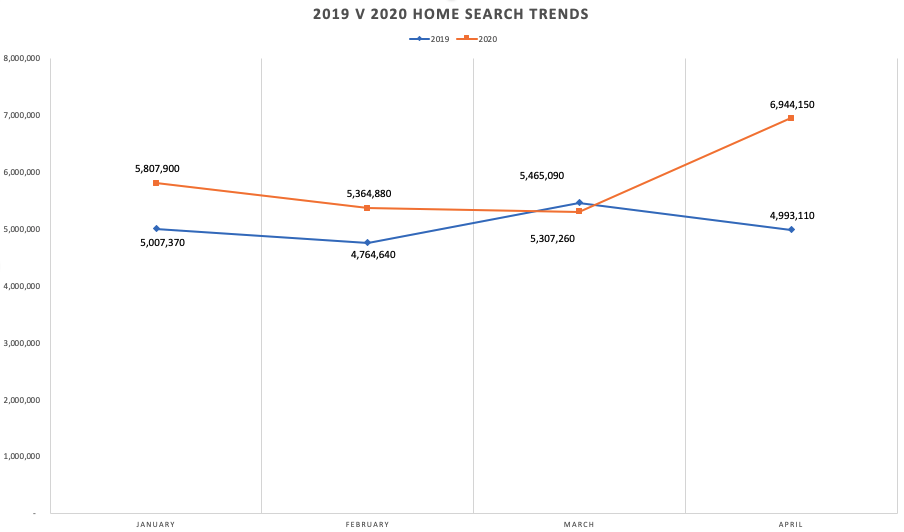
As today’s affluents are spending more time at home than ever, they’re coming to the realization – some quicker than others – that we’re in this for the long haul. Life in public spaces will likely be forever changed. And so, it seems, will life in their homes. Yes, home is haven, but it’s also the place where many people are working, educating children or housing young adult children – which is creating new boundary issues along with an overwhelming desire to create spaces where they can both escape and connect within their homes.
This is great news for marketers of high-end home products. But, it’s important to remember that not all affluent consumers are the same. Tenure, life stage, net worth and worldviews have a significant impact on spending behavior and brand perceptions.
WHY TENURE AND AGE MATTER
For seasoned affluents with high net worth and long-term financial security, major renovations and home purchases will likely proceed as planned. You might say these older or more seasoned affluent consumers are more comfortable with the uncertainty. And, where better to focus their attention and investments than their home? Second homes are particularly important for this sector given their strong cravings for respite and a change of scenery, while remaining safe and responsible.
In contrast, affluent parents with young children are consumed with childcare and education-in-place activities. Older newly affluent parents may be spending time with grown but not yet out-of-the-nest children in ways they never have. Adding to these worries, if this group is relatively new to affluence, you can expect that they will be skittish about making major investment decisions in the near term.
CREATING THE OPTIMAL HOME ENVIRONMENT
Concentrated time in the home, regardless of affluent status or tenure, is leading to a hyper-focus on creating the optimal home environment – again good news for high-end home products. Depending on life stage, net worth and worldview, how quickly affluents act on major purchases will vary just as their sensitivity to marketing messages varies. Some may splurge on small luxury items to enhance the home (think an outdoor theater system or $600 espresso machine) while others initiate major renovations adding a home office, pool or in-home gym. Regardless of where they are on the spectrum, affluent consumers are window shopping right now, albeit from their computer screen.
There was a nearly 40% increase in home-related Google searches from April 2019 (4.99 million) to April 2020 (6.94 million) for the same keywords.

Obvious near- and long-term winners include products, services and renovations related to creating an optimal home office, upgraded kitchens and enhanced outdoor living spaces. Creating the ultimate outdoor cooking, dining and media entertainment experience is quickly shifting from a nice-to-have to a must-have for affluents who are sheltering in place with family. You can also expect increased interest in home products, appliances and fixtures touting microbial surfaces and touchless features, along with more substantial changes such as the addition of a mud room, providing family members a place to drop shoes and wash hands before entering the main home.
WHAT THIS MEANS FOR MARKETING HIGH-END HOME BRANDS
Now is the time to focus on who’s buying your product/service and why. This means closely monitoring their shifts in attitudes and behaviors, as our current state of extreme unpredictability translates to quickly evolving customer sentiment. Many affluent consumers are in the midst of reassessing their own personal values, impacting how they think of brands and what brands they choose to support moving forward. This values assessment was already prevalent among younger affluent audiences.
Defining your ideal customers in purely demographic terms has been inadequate for some time now. Exceptional marketers long since recognized that all consumers, but particularly affluent consumers, are discerning with varied emotional drivers and motivations supporting their purchase decisions. This is why clarity surrounding your brand values is so important. We can effectively target a demographic all day long using digital media tools and analytics to hone in on your desired customer. But to make the most of your media investment and targeting capabilities, knowing how that customer feels and what they expect of the brands they purchase in today’s quickly changing environment is essential. It’s best to make sure your brand strikes the right tone with the right message in addition to landing it in the right inbox.
As polarized as we were before the pandemic hit, it seems we are approaching new levels of polarization in response to it. Understanding what your brand stands for and how to communicate with your customers is paramount. And, while it’s rare that a brand appeals to one narrowly defined persona, it is equally unlikely that it appeals to all affluents. Everyone’s response to the pandemic is unique. Smart brands will invest now to better understand, communicate with and appeal to their customers of tomorrow. History and common sense tell us that the spending floodgates will loosen the fastest among affluent consumers. Will your brand be ready and in their consideration set?


